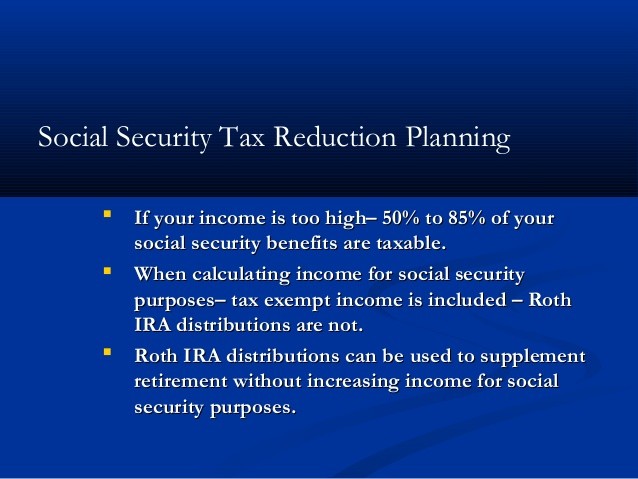What If Your Income Is Too High for an IRA
Post on: 23 Июнь, 2015 No Comment

High-earners are in something of a Catch-22 when it comes to saving for retirement. On one hand, they have the extra income available to fully fund tax-deferred retirement vehicles but that extra income often disqualifies them from the accompanying tax breaks .
The IRS limits tax-deductible contributions to Traditional IRAs to those individuals who earn $69,000 or less, and married couples who earn $115,000 or less. Roth IRA contributions are limited to individuals who are making less than $127,000, and married couples who are making less than $188,000 .
So, what are the best investment options for these high-earners? Here are three ways high-income individuals and couples can still put away money for retirement without feeling overwhelmed by the taxman.
1. Roth IRAs
If your income is above the Traditional IRA limit, but below the Roth IRA limit, this is an excellent option. The Roth version of this investment vehicle front-loads your tax burden. So, instead of funding the IRA with pre-tax dollars (as you do with a Traditional IRA) and then owing taxes when you withdraw the money, you put money youve already paid taxes on into the IRA. and owe nothing when you withdraw.
2. Non-Deductible Traditional IRAs
If you cant contribute to a Roth IRA because your income is above that limit, you still have the option of contributing to a non-deductible Traditional IRA. Basically, youll be putting taxable income into the IRA; you cant deduct your contribution, and will have paid taxes on the amount you contribute.
Youll also owe taxes on the money you withdraw from your non-deductible IRA but only on your gains. The original amount you contributed has already been taxed, so it’s safe from Uncle Sam’s tax bite.
This is better than a fully taxable brokerage account because your money does grow tax-deferred. So even though youll owe money on the gains you receive from your investments, you wont be taxed until after your money has compounded over the years, thereby reducing your overall burden. Taxable brokerage accounts owe money to the IRS on interest and dividends each year, meaning theres less money available in the accounts to benefit from compound interest.
3. Backdoor Roth IRA Contributions
The best option for many high earners will be using the backdoor provision for opening a Roth IRA. As of 2010, the government eliminated income limits for converting a Traditional IRA to a Roth IRA. This means that any high-income earner whos priced out of opening a Roth account still has the opportunity to take advantage of one.
What youll have to do is open a non-deductible Traditional IRA account, and then immediately roll it over into a Roth IRA. Since youve already funded the non-deductible Traditional IRA with post-tax dollars, youll only owe money on any gains your investment has made and if you do an immediate conversion, there should be no gains and therefore no tax bill.
Your money in the Roth account will then grow completely tax-free, and youll owe nothing when you withdraw it during retirement.
Davids Note: Be careful when you attempt a backdoor Roth conversion. Its true that this maneuver can turn a non-deductible Traditional IRA contribution into money inside a forever tax free Roth IRA, but taxes on the conversion will be calculated based on all assets in your pre-tax IRAs (like a Traditional or a Rollover IRA). Before you consider such a move, make sure you dont own any pre-tax IRAs first. Otherwise, you might get an unexpectedly large tax bill.
The Bottom Line
Having a high income is certainly a good problem to have, but that doesnt change the fact that figuring out a tax-efficient way to save for retirement can be a headache. Any of these three options can help high-earners save for retirement and minimize their overall tax burden.
Have you tried any of these methods of saving for retirement?
Editor’s Note: I’ve begun tracking my assets through Personal Capital. I’m only using the free service so far and I no longer have to log into all the different accounts just to pull the numbers. And with a single screen showing all my assets, it’s much easier to figure out when I need to rebalance or where I stand on the path to financial independence. They developed this pretty nifty 401K Fee Analyzer that will show you whether you are paying too much in fees, as well as an Investment Checkup tool to help determine whether your asset allocation fits your risk profile. The platform literally takes a few minutes to sign up and it’s free to use by following this link here. For those trying to build wealth, Personal Capital is worth a look.














